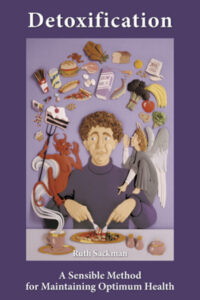Spice of the Month
Health Benefits of Chili Pepper
September 10, 2012 - Category: Spice of the Month
The health benefits of chili pepper is great. Whether spelled chili, chile or chilli, this is the hottest spice in the world! Chili peppers have a persistent heat that can range from tangy to tongue torching. And, clearly, hot is "in": chili is the most consumed spice in the world - 20 times more than…Health Benefits of Chili Pepper
Read more...Proven health benefits of Horseradish
June 26, 2012 - Category: Spice of the Month
Horseradish (Armoracia rusticana), native to the lands around the Mediterranean, made it's way North in the 15th century where it became hugely popular, especially in German- speaking countries. The Germans called the root meerrettich, sea radish (meer, German for "sea" because it grew by the sea, and rettich, from Latin radix, "root"). So what do…Proven health benefits of Horseradish
Read more...Health benefits of Ginger
June 26, 2012 - Category: Spice of the Month
The health benefits of ginger are huge. Ginger (Zingiber officinale), not a root but the underground stem (rhizome) of a plant, gets its name from the Sanskrit stringa-vera, meaning "with a body like a horn," as in antlers. Confucius (551-479 B.C.) mentioned ginger in his writings and, named in the Koran, it was known in…Health benefits of Ginger
Read more...The medicinal value of Vanilla
May 22, 2012 - Category: Spice of the Month
The medicinal value of Vanilla
Read more...The medicinal properties of Black Pepper
April 23, 2012 - Category: Spice of the Month
Black pepper has medicinal properties dating back to the 1500's. Black pepper (Piper nigrum) bears the royal pedigree, "King of Spices." In early times, it was more valuable than gold. Only the wealthy could afford it; dowries were endowed with it and many bribes for special favors were paid with it. Black peppercorns were found…The medicinal properties of Black Pepper
Read more...Medicinal Properties of Nutmeg
March 20, 2012 - Category: Spice of the Month
The medicinal properties of nutmeg date back centuries. Nutmeg (Myristica fragrans), a nut-like pit or seed, got its English name from Latin nux, meaning nut, and muscat, musky. From the 14th-18th centuries, nutmeg was at the center of the bloody spice wars as the Dutch, Portuguese, French, and English fought over the "spice islands," the…Medicinal Properties of Nutmeg
Read more...The medicinal properties of Juniper
February 15, 2012 - Category: Spice of the Month
The juniper berry (Juniperus communis) is not a berry at all, but a tiny cone from the evergreen-like juniper tree. In ancient times, the piney-scented "berries" were believed to ward off witches, evil spirits, curses and contagion. Early Greek, Roman and Arab physicians considered the juniper berry a fruit with great medicinal properties; Renaissance doctors…The medicinal properties of Juniper
Read more...Medicinal Properties of Star Anise
January 15, 2012 - Category: Spice of the Month
Star anise (Illicium verum), with its sensual curves, firm body and alluring scent, wins the spice beauty pageant! And it’s beauty is more than skin deep because it has so many medicinal properties. The perfect 8-pointed star with slender pods, each pod cradling a seed, is the sun-dried fruit of native Chinese evergreens. Its most…Medicinal Properties of Star Anise
Read more...Medicinal properties of Clove
December 12, 2011 - Category: Spice of the Month
Cloves (Eugenia caryophyllus), the dried flower buds of an Asian evergreen tree, look like crude-shaped nails — so no surprise the word “clove” comes from the Latin clavus, meaning “nail.” The Chinese wrote about this pungent, slightly sweet tasting spice as early as 400 B.C., including records of courtiers told to keep cloves in their…Medicinal properties of Clove
Read more...
The health benefits of Turmeric
November 14, 2011 - Category: Spice of the Month
Turmeric (Curcuma domestica) is a spice superstar with toms of health benefits! Used for nearly 4,000 years in India, first as a dye, then a kitchen staple, the colorful root has been revealing its many medicinal properties over the centuries and now, under intense scientific scrutiny, it's emerging as one of nature's most powerful healers.…The health benefits of Turmeric
Read more...





